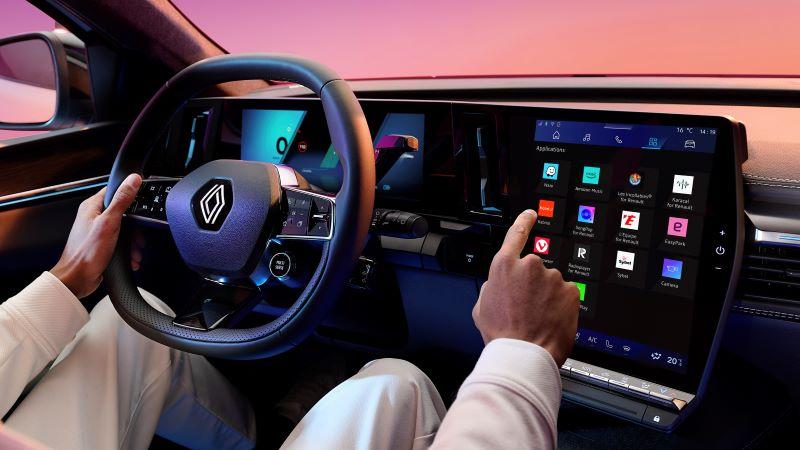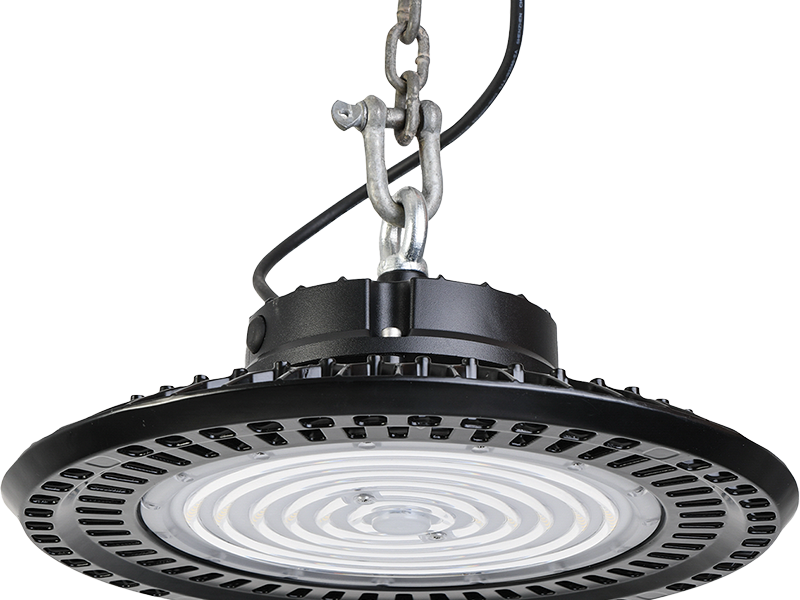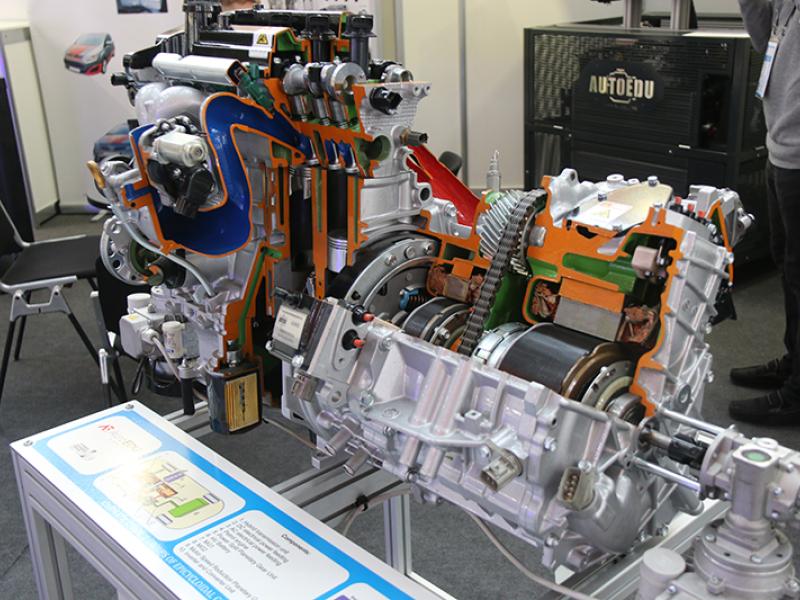Since the launch of Clio IV and ZOE in 2012, the centre of the dashboard of Renault vehicles has featured a multimedia touch screen. Initially small, this screen offered basic functions such as navigation and audio settings. With the meteoric evolution of digital technology, drivers are looking for a more intuitive, user-friendly experience. Today, this is offered by the unified OpenR screen in the shape of an upside-down L, found for example on Scenic E-Tech Electric and Austral. It sets the current benchmark in terms of design, ergonomics, and innovation.
How do the brand’s designers put these demands at the heart of the development process for new model screens? How do they anticipate needs and trends to create the right type of screen at the right time?
The evolution of in-cabin touchscreens is, above all, a story in motion. To find out more, we called on the expertise of Stéphane Maiore, Chief Interior Designer at Renault, and Marc Pinel, Chief Advanced Experience Design.
Fasten your seatbelts and welcome on board
Integrated into the dashboard of most modern vehicles, GPS and multimedia screens began to replace car radios in the early 2000s. Back then, they were operated “manually”, using a thumbwheel or joystick. Then, for better ergonomics and as technological advances allowed, these screens became touch sensitive.
A joystick at your fingertips
In 2012, ZOE was the first Renault vehicle to be equipped with a touchscreen, along with Clio IV
In 2013, Clio IV and ZOE, the first two Renault models to feature a central touchscreen, were launched. At the time, their 7” screens enabled drivers to control the R-Link multimedia system and access the car’s settings, radio, and navigation centrally, just with their fingertips.
Before a complete switch to touchscreens, the joystick that had previously been used to control the non-touchscreen central screens was improved in the same year with a multi-directional axis to facilitate navigation in the R-Link multimedia interface. This new feature was offered on Scenic XMOD and the Megane range, while a handrest was developed on Espace IV for easier use of the joystick and therefore the screen.
The joystick for controlling the screen has lasted for a few years, despite the switch to touch technology.
Over the years, Renault has continued to develop the use of touchscreens in the interiors of its models, making them larger, more responsive, and more sophisticated.
“The switch from joysticks to touchscreen quickly became a necessity, so that users could return to the habits they had already adopted with their phones or tablets,” says Marc Pinel, Chief Advanced Experience Design.
Touchscreens in the smartphone’s footsteps
Like smartphones, touchscreens in vehicles have become increasingly responsive over the years, even more that “behind the glass”, the processors and memory running multimedia systems have become ever more powerful. The ecosystem running the screens has also progressed, with advanced functions such as smartphone connectivity, voice control and compatibility with virtual assistants. Embedded applications also multiplied, for an enriched and increasingly personalized experience.
Over the years, new functions have emerged behind touch screens.
2014 marks a major change, at odds with the automotive standards of the time: the fifth generation of Renault Espace is equipped with a vertical – rather than horizontal – 8.7” touchscreen, again with the aim of offering users an experience like smartphone use. Thanks to connectivity, this screen provides access to weather forecasts, real-time traffic information and local search.
Stéphane Maiore takes us back to the first tests: “In 2010, we taped an IPad to the dashboard to see what a vertical format could do. We were the first to bring out screens in this format with such an orientation.”
Marc Pinel adds, “The idea was to show the speed of interaction and the advantage of a vertical screen for viewing a map.”
This vertical positioning of the multimedia touchscreen is rapidly spreading through the range: Megane IV (2016), Koleos II (2017), Clio V (2019) and Captur II (2019) are all equipped with it.
Of course, at the same time, designers were already thinking about the next move, aware that this kind of breakthrough would not last. The two unavoidable trends of the time were the arrival of a second screen on the dashboard, facing the driver, and a demand for better, safer ergonomics.
This led to the development of a new form of screen, integrating both the dashboard screen and the multimedia display: the “all-in-one double screen” in the shape of an inverted L (“L-Shape”), tested on concept cars such as TreZor (2016), SYMBIOZ (2017) and MORPHOZ (2019).
Functionality, aesthetics and elegance were the three key words in the design of this OpenR screen: “With the OpenR screen, we wanted to centralise a single system in a single object. With a dedicated driving screen and a dedicated multimedia screen,” explains Marc Pinel.
His inspiration gave rise to a true symbiosis between the digital system and the screen configuration, where “everything is in its place”.
Beyond the practical, its design transcends the simple “utilitarian object” to become a true emotional expression. Every time the door opens, it’s this screen that greets the eye: a constant reminder of the alliance between technology and aesthetics that defines the Renaulution era.
OpenR Link, its operating system, is the fruit of this philosophy. By simplifying menus and screen navigation, it reduces the number of operations, offering instant access to essential functions. A major advance in automotive ergonomics, freeing the user from superfluous constraints.
The customer experience, a driving force for innovation
The real revolution with the new shape of the OpenR screen lies in understanding and considering users’ habits and needs.
In this constant quest for improvement and innovation, a practical approach was adopted for this project: customer panels were mobilized to test prototypes quickly and regularly.
“During the development phase of Megane E-Tech Electric and the OpenR screen, a static mock-up of the cockpit was produced in the workshop for testing with real users.” explains Marc Pinel.
This approach enabled to gather valuable information, so the developments can be adjusted accordingly, as part of a continuous improvement process.
Marc Pinel reveals that, faced with the dilemma between the in-car system and their favorite mobile applications, many of the panel’s test customers still preferred the comfort of their smartphone strapped to the dashboard. For OpenR, the solution was obvious: integrate these familiar applications into the car’s ecosystem, offering a driving experience closer to our smartphones, and above all, imbued with confidence.
To understand these needs, we need to immerse ourselves in the digital world, where trends evolve at dizzying speed, in stark contrast to the renewal cycle of the automobile.
“Between Clio IV and V, there were six generations of iPhone!” recalls Stéphane Maiore, to help us understand this gap.
What’s the future for on-board touchscreens?
The upside-down double L-shaped OpenR screen, a symbol of innovation today, is not necessarily suited to all needs and all vehicles. On the latest Renault 5 E-Tech electric, the 10.1” on-board display and the 10” multimedia screen are positioned horizontally.
Why? To be coherent with the interior design, which features a completely horizontal dashboard, and of course for ergonomic reasons.
The saying ‘all things come in threes’ takes on its full meaning when you discover the new three-screen panoramic display on the Renault Grand Koleos, a model recently unveiled on the Korean market. This touchscreen remains horizontal but extends all the way to the front passenger to fully integrate them into the on-board multimedia experience.
For the future, the location of the touch screen is a key challenge. It requires constant adaptation of form, digital evolution, and user experience, in an optimal and secure way.
The future of our cockpits lies in a perpetual quest for innovation, adaptation, and safety, in the service of an ever more ergonomic, fluid and intuitive driving experience. A critical analysis of our current concepts prompts us to look to the future with lucidity: perhaps one day, concealing screens will become necessary to reconcile accessibility and discretion.






